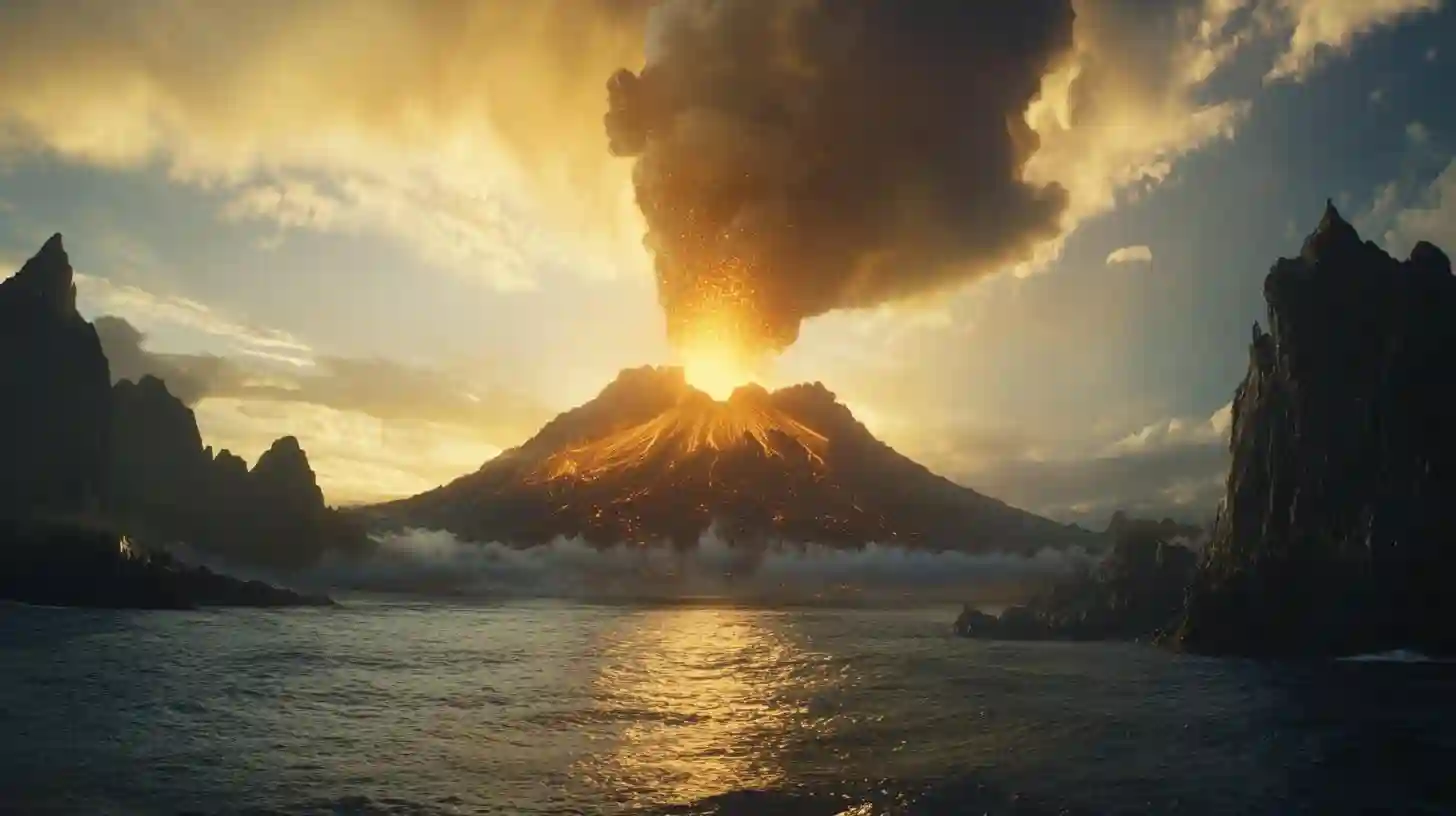
Wisdompulseonline

The calm surface of the Pacific Ocean has always concealed extraordinary depths, both in beauty and in terror. Recently, one of nature's most powerful forces unleashed its fury, captivating and alarming those who watched the explosive drama unfold. An underwater volcano erupted with rage, sending shockwaves across the Pacific region, shaking the foundations of communities and forever altering the landscape.
As the eruption began, the ocean surface roiled, bubbling furiously as gas and molten rock surged from the depths. This spectacle of nature fascinated some while instilling fear in others. The explosive force of the volcano propelled ash high into the atmosphere, creating a massive plume that could be seen from miles away. Witnesses described the sight as both mesmerizing and terrifying, as the vibrant colors of the ash contrasted starkly against the blue expanse of the ocean. The eruption injected a significant volume of water vapor, carbon dioxide, and sulfur dioxide into the atmosphere, affecting local weather patterns and leading to dramatic changes in air quality.
Those living in nearby coastal areas felt the immediate impact, as the ground trembled beneath their feet. The sound of the explosion echoed like thunder, reverberating through the air and reaching distant shores. People were left startled and bewildered, scrambling to understand the event unfolding before them. Many residents were evacuated from their homes, fleeing to higher ground in anticipation of potential tsunamis or further eruptions. The connection between humans and the earth became acutely evident, as nature reminded us of its immense power and inherent unpredictability.
As scientists monitored the eruption from research vessels and land-based observatories, they worked feverishly to assess the situation. The real-time data collected from the site of the eruption provided invaluable insights into volcanic activity and its impact on surrounding ecosystems. They deployed drones and underwater robots to gather information about the volcano, observing the changes in topography and water temperature that accompanied the eruption. These scientists understood the significance of this event, not just as a momentary explosion but as part of a much larger narrative of life on Earth.
The environmental repercussions of such eruptions are profound and far-reaching. The ash released can travel vast distances, settling on land and altering habitats. Over time, volcanic eruptions contribute to the formation of new landmasses, reshaping the geography of the areas affected. Marine ecosystems, too, face disruptions as ash, gases, and volcanic materials impact the delicate balance of life beneath the waves. Fish, coral reefs, and other marine organisms may struggle to survive in the aftermath, leading to cascading effects on food chains and local economies reliant on fishing.
On a social level, the eruption tested the resilience of communities that have historically coexisted with these formidable forces of nature. Emergency services sprang into action, mobilizing to provide support for those displaced and to assess the damage inflicted by the volcanic activity. Aid organizations and local volunteers came together, showcasing the strength of human solidarity in times of crisis. Such events often serve as reminders of the need for preparedness, as well as the importance of understanding the risks associated with living in geologically active areas.
As the eruption continued, the world watched intently, captivated by simultaneous wonder and dread. News outlets shared live updates, bringing the drama into homes far removed from the danger zone. There is an innate curiosity about the raw force of nature, and while many were anxious about the potential for disaster, others felt an inexplicable connection to the event, recognizing it as part of the intricate dance of life on Earth.
In the aftermath, as scientists and communities began to assess the long-term effects, discussions emerged about the nature of resilience, adaptation, and coexistence with the unpredictable elements of the natural world. The volcanic eruption in the Pacific was more than a single explosive moment; it was a reminder of the compelling and often dangerous forces that shape our planet. It illustrated the delicate balance between humanity and its environment, urging a collective reflection on how to navigate the challenges posed by nature while embracing its unfathomable beauty and power. As we move forward, the lessons learned from this event will undoubtedly serve as a foundation for future research, emergency preparedness, and community resilience in the face of nature’s most explosive forces.